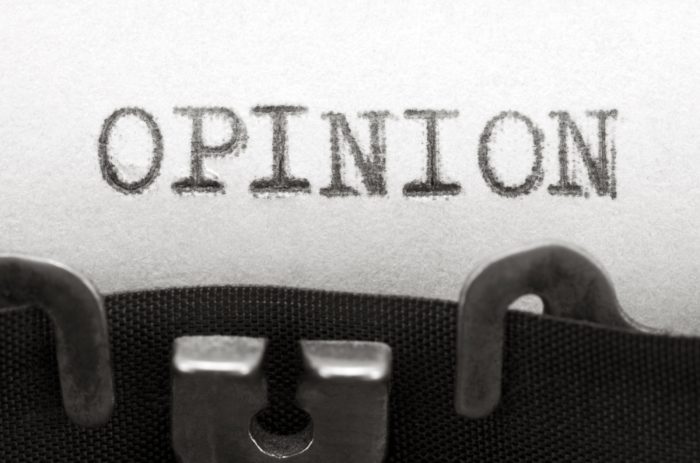redo Jump to...
print Print...
(by Anne Applebaum, WaPo.com) – According to its director, the Smithsonian’s Museum of American History needs new plumbing, new wiring and better lighting. So desperately does the building require renovation, in fact, that there is talk of shutting the whole place down for a year or two, of bringing in some fresher architecture, even of designing a “museum for the 21st century.” But while they’re at it, maybe the curators of this hugely popular, hugely prominent museum on the Mall should also spend some time talking about what, precisely, their museum is for.
I realize this is no easy task. Probably best known to generations of Washington children for its large collection of trains, the Museum of American History is the one part of the Smithsonian that justly deserves to be called “the nation’s attic.” It collects everything from first ladies’ gowns to family photo albums to old ballots. It owns, among other things, Helen Keller’s watch, Cesar Chavez’s union jacket, Thomas Edison’s light bulb, and a copy of Elvis Presley’s first album. Its current exhibits explore America’s campaign against the polio epidemic, the first 50 years of Disneyland, the impact of Brown v. Board of Education and the music of Latin pop star Celia Cruz.
Just about the only thing that the Museum of American History does not do, in fact, is teach anyone American history. That is, it doesn’t tell the whole American story, or even chunks of the American story, in chronological order, from Washington to Adams to Jefferson, or from Roosevelt to Truman to Eisenhower. When the museum was built in 1964, this sort of thing probably wasn’t necessary. But judging from a group of teenagers whom I recently heard lapse into silence when asked if they could identify Lewis and Clark, I suspect it’s now very necessary indeed.
Opinion polls bear out my suspicions. According to one poll, more U.S. teenagers can name the Three Stooges than the three branches of government. Even fewer can state the first three words of the Constitution. A San Francisco reporter once did an informal survey of teenagers watching Fourth of July fireworks in a park and found that only half could name the country from which the United States had won its independence. (“Japan or something, China,” said one seventh-grader. “Somewhere out there on the other side of the world.”) We’re not talking about ignorance of semi-obscure facts here: We’re talking about ignorance of basic information.
Given this yawning knowledge gap, the Museum of American History could perform a real service to its 3 million annual visitors just by telling them, in at least one or two permanent exhibitions, something about what actually happened. After all, museum visitors can see Mickey Mouse and his ilk any time. But many visitors, after their once-in-a-lifetime trip to Washington, won’t go to another history museum again. Ever.
I’m sure chronology isn’t the hottest thing in curatorial science these days, but a museum that tells a chronological story doesn’t have to be full of dusty displays and dull captions. The first room of the museum of totalitarianism in Budapest opens with a bank of television sets blaring fascist propaganda on one wall and a bank of television sets blaring communist propaganda on another. Without a single written word, the dilemma of Hungary in the 1940s becomes instantly clear. Apply the same ideas to the American Revolution — use music, pictures and, yes, George Washington’s candlestick — and it’s possible to fascinate even the most video-numbed modern American. Nor are cartoon characters needed to make U.S. history “relevant” either: The language of the American Constitution is the language of the civil rights movement and the language Sen. Barack Obama used in his speech [during the 2008] Democratic convention. An exhibition on the Civil War would naturally include Confederate flags and symbols, which are still the subject of controversy today.
None of which is to say that the museum needs to chuck out Evel Knievel’s motorcycle and Judy Garland’s ruby slippers or (worse) put them in a pompous exhibition called “Postwar Popular Culture.” Why not stick them on the top floor and jumble them together with the “I Like Ike” buttons,” Alexander Graham Bell’s telephone and the first sewing machine. Let visitors wander through the nation’s attic — but with a better understanding of how the nation got to be here in the first place.
Posted at WashingtonPost.com on June 22, 2005. Reprinted here on December 29, 2011 for educational purposes only.
Questions
The purpose of an editorial or commentary is to explain, persuade, answer, warn, criticize, entertain or praise. Sometimes commentators identify a problem and offer a solution.
1. What problem does Anne Applebaum identify in her commentary?
2. What solution does she propose?
3. Re-read paragraphs 3-7. Do you think Ms. Applebaum makes a good argument in support of her opinion? Explain your answer.
NOTE: The Smithsonian Institution is an educational and research institute and associated museum complex, administered and funded by the U.S. government and by funds from its endowment, contributions, and profits from its retail operations, concessions, licensing activities, and magazines. The Smithsonian has requested $797.6 million from Congress in 2011 to fund its operations. While most of its 19 museums, its zoo, and its nine research centers facilities are located in Washington, D.C., sites are also located in Arizona, Maryland, New York City, Virginia, Panama, and elsewhere. The Smithsonian has over 136 million items in its collections. The Smithsonian Institution is the largest museum complex in the world, and many of its buildings are historical and architectural landmarks. (from wikipedia entry on Smithsonian)


